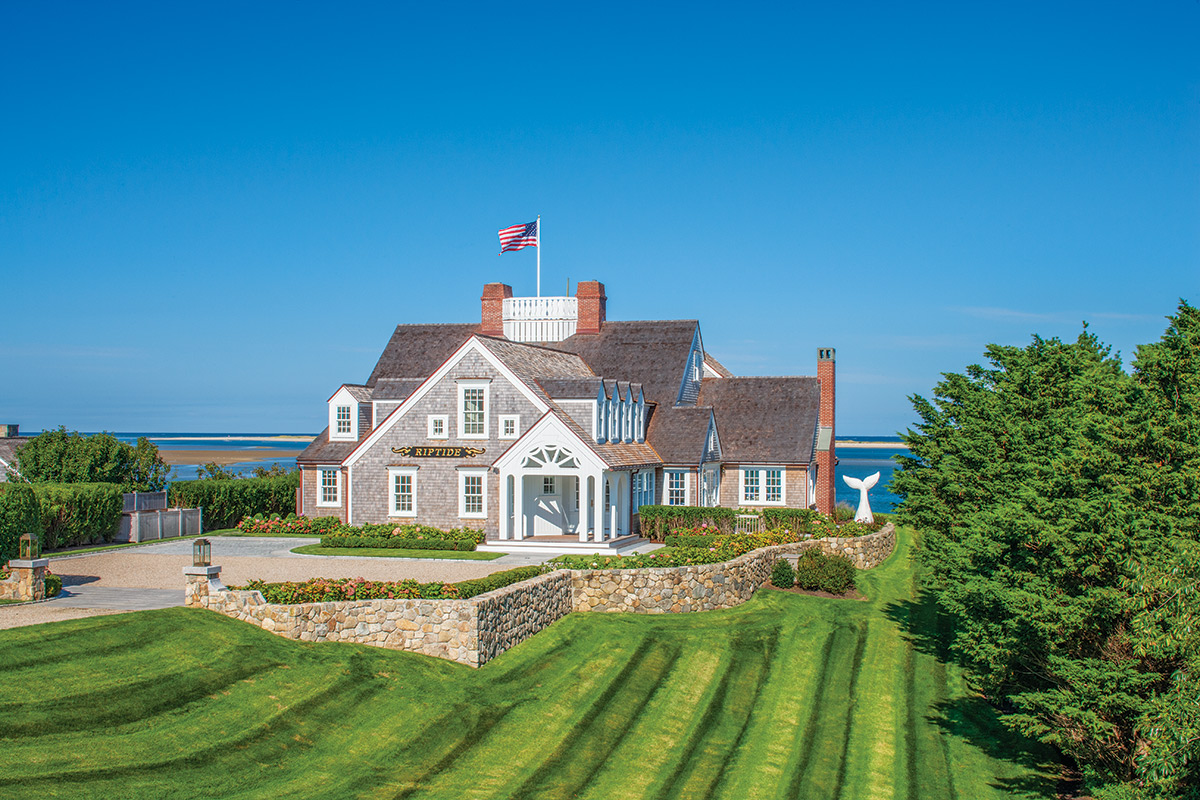The house known as “Riptide” was already a beloved Cape Cod landmark when Polhemus Savery DaSilva (PSD), a design-build firm, launched a renovation in 2019. A tall Colonial Revival house standing high above the water, it is a prominent fixture located between Shore Road, Chatham’s grand waterfront boulevard, and Chatham Harbor.
“We had renovated the house for a previous owner,” says PSD principal, John DaSilva. “And now we did it again for the current owner.”
He hastens to add that the house has undergone many renovations since it was built in the first decade of the 20th century.
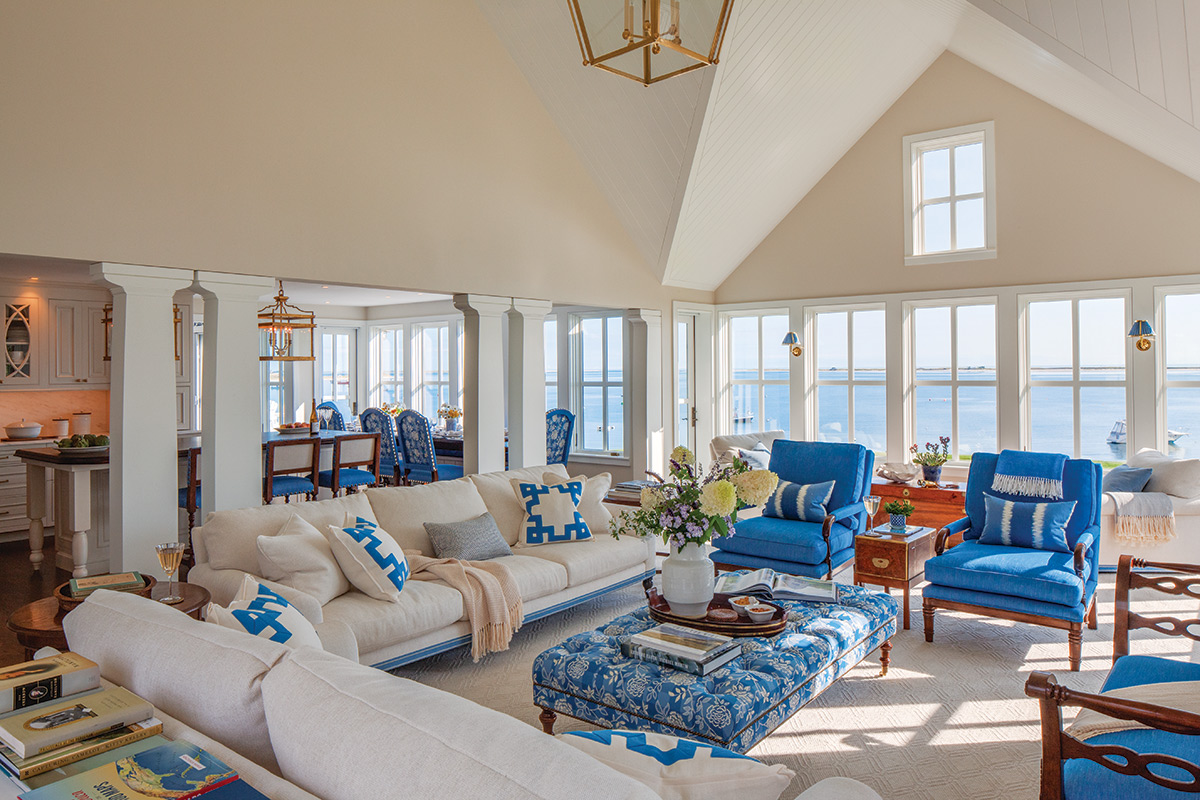

“The most dramatic, in the 1930s, turned what was probably a simple bungalow into a Colonial Revival house,” DaSilva explains. “The property owners of that time, early enthusiasts of historic architecture, bought parts of antique houses in northern New England, including paneling and fireplace surrounds, and installed them here.”
Various renovations though the years, he adds, made for somewhat dark interiors with little natural flow through the rooms.
“Our goal was to renovate the house for a family while maintaining its iconic status in the community,” says PSD’s CEO, Aaron Polhemus. “The client wanted the view from the street to remain as is, but they wanted more space for friends and family, a more open floorplan and more headroom.”
“While updating the house,” he adds, “we installed all new insulation and new energy-efficient windows.”
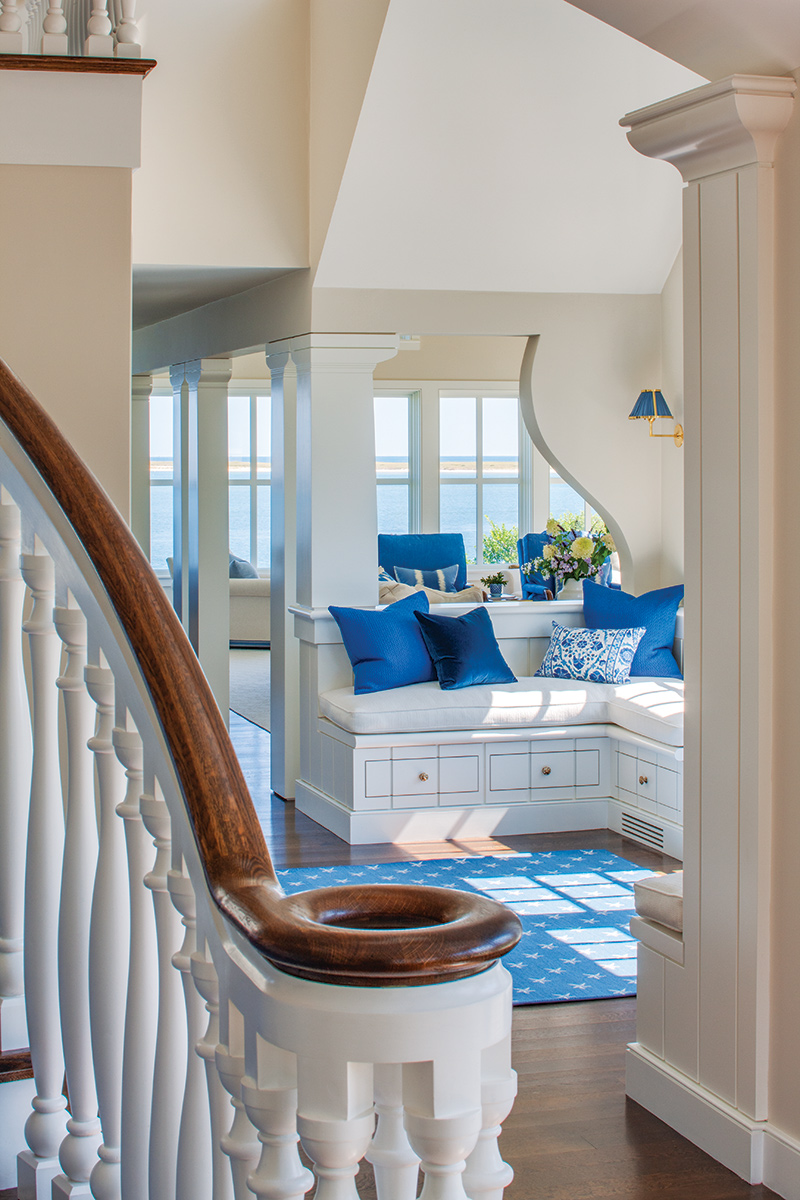

John DaSilva describes the transformation of the interior architecture.
“The main entrance used to be on the side of the house, where a big, sculpted whale tail is a prominent part of the landscape. [See below.] We designed a new entrance facing the street, added a two-story family room on the ocean side, built a grand new curving staircase and reoriented the rooms so that now, you can see through to the view from the front entry.”
Located on the Cape, the firm is responsible for many of Cape Cod’s new houses and historic renovations and has special sensitivity to the role important buildings play in community character.
“It was important to keep the historic character from Shore Road unchanged, so we only minimally altered the roof pitch, kept the character of the dormers and windows,” DaSilva explains. “The new addition was put on the ocean side to maximize the views and the light.”Along with a soaring water-facing family room and the sweeping new staircase, the renovation included a new kitchen, a cathedral ceiling over the staircase and more open flow to existing spaces in the front of the house.
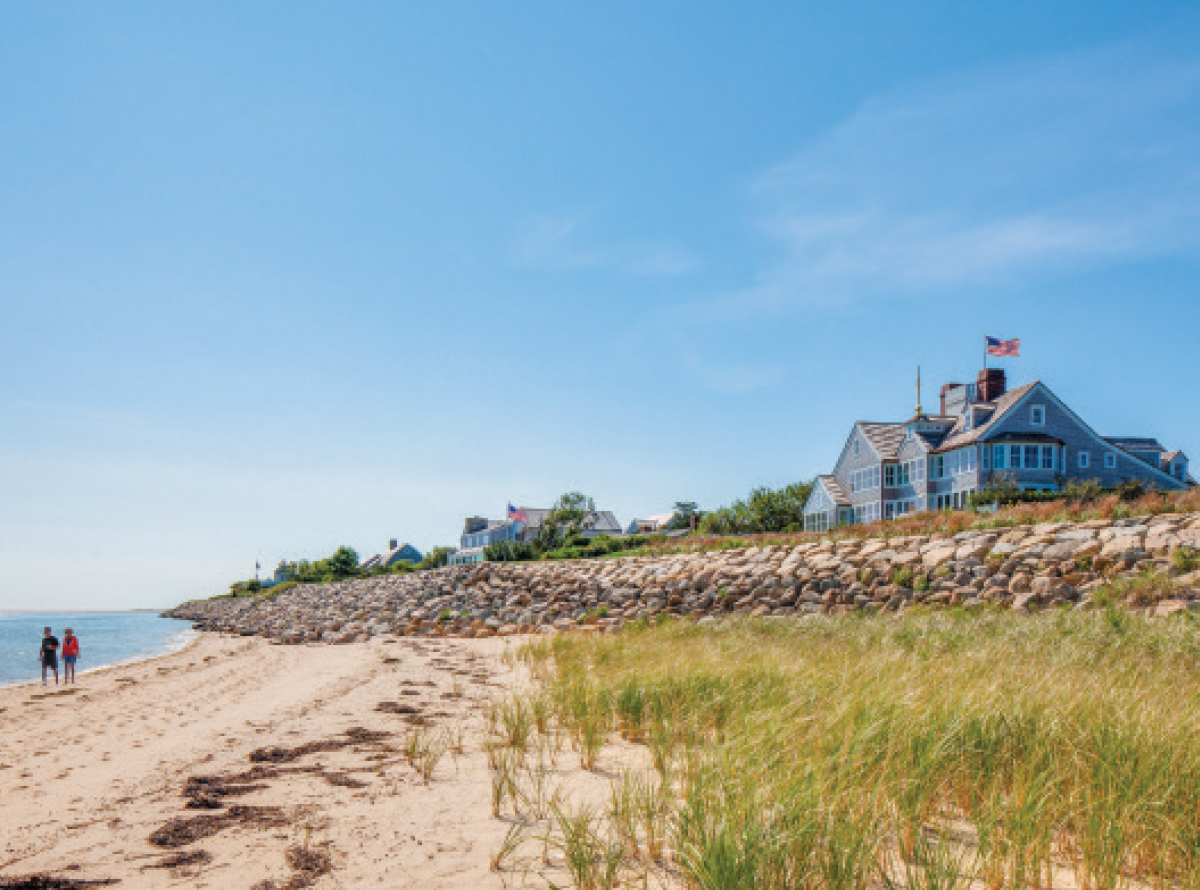

“The homeowner wanted a sensibility that they described as ‘part Beacon Hill, part Cape Cod beach house,’ so, as you move toward the ocean, it gets more informal and playful,” says DaSilva. “It’s a beach house in the family room, but the curving staircase at the entrance is a nod to Beacon Hill formality.”
In order to support the soaring new ceiling heights without the use of intrusive columns that would break up the interior’s new openness, a structural steel system was installed that supports the roof and the dormers.
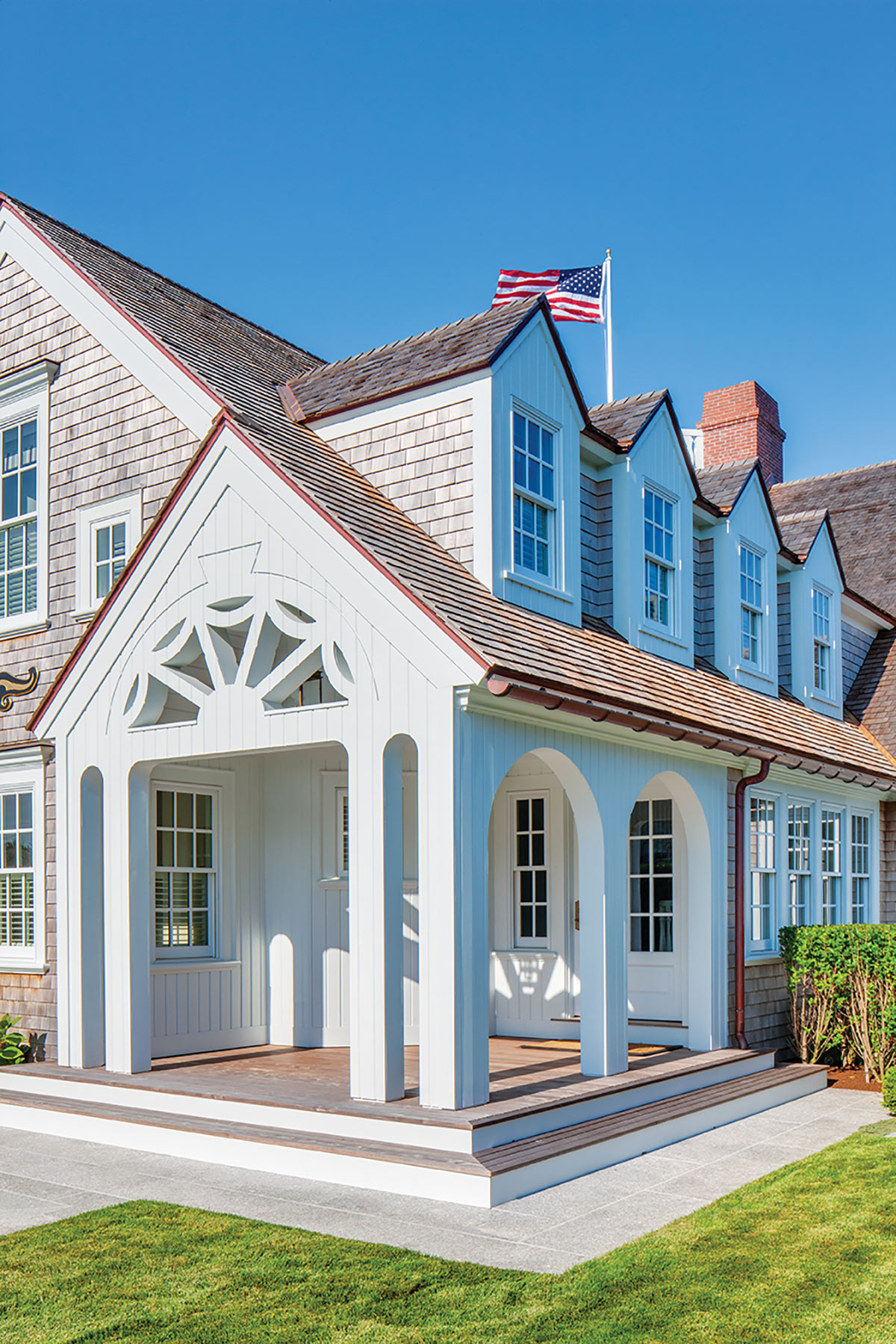

The four second-story bedrooms are reconfigured, and a new first floor guest bedroom is located where the kitchen had been. New coffers in the dining room ceiling add to the Beacon Hill sensibility of the formal rooms. A former sitting room is now a screened porch. When renovating this space, PSD was careful to retain the intricate fireplace surround installed in the 1930s.
“We brought the old fireplaces up to code while maintaining their historic character,” DaSilva says. Atop “Riptide,” PSD added a new balustrade to the old widow’s walk; there is also a new eagle weathervane. Both are most visible from the water, where another generation of sailors makes their way past the house, into Chatham Harbor.
A Whale’s Tale
To the side of “Riptide” stands a beloved feature of the local landscape: a seven-foot-tall white marble sculpture of a whale’s tail that appears to rise up out of the ground as the mammoth whale sounds, waving its flukes at Captain Ahab.
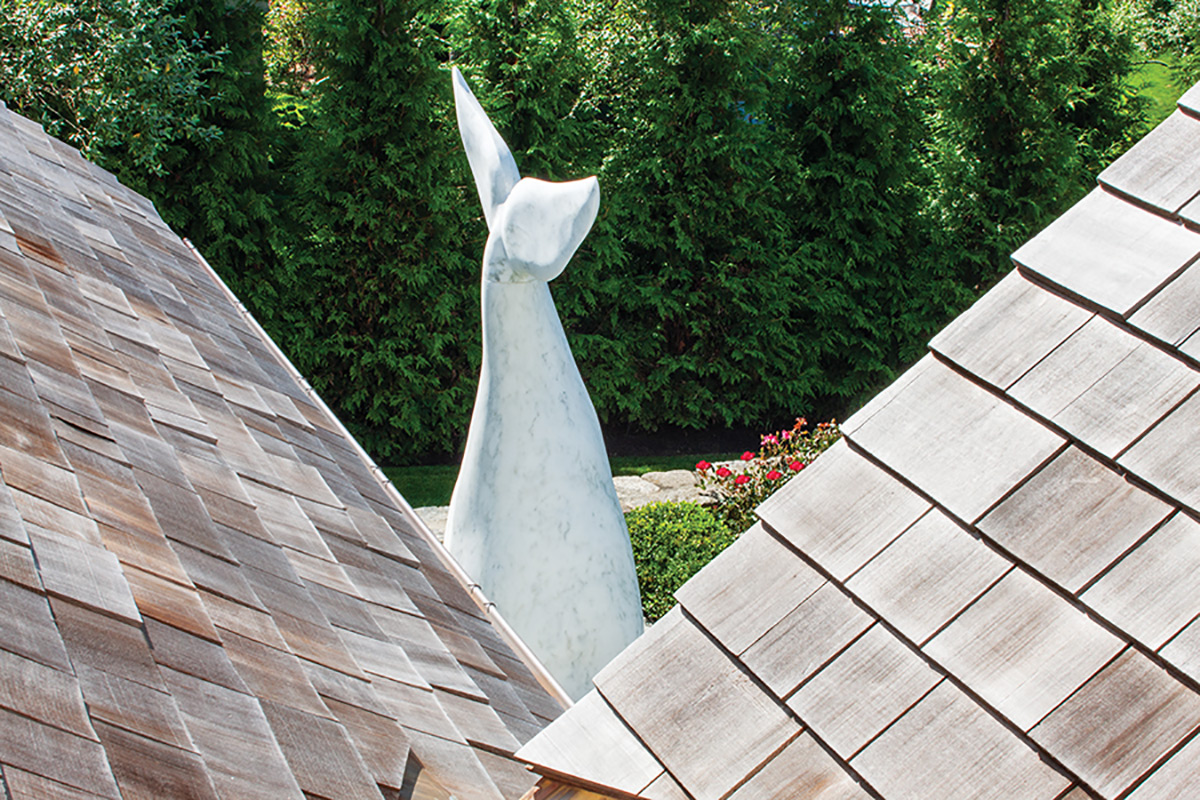

Brewster stone carver Tim Dibble sculpted the whale’s tail from a six-ton slab of white marble. Until he created this arresting piece of outdoor art, Dibble was best known for making hand-carved, traditional headstones, as well as for preserving and repairing historic grave markers. In 2011, he received a dream commission: the then-owners of “Riptide” wanted a landscape feature that would speak to area history.
When he was finished, it took four men and a crane to place the whale’s tail. It immediately became a neighborhood favorite and has been a distinctive feature of “Riptide” ever since.
For more information, visit psdab.com.


